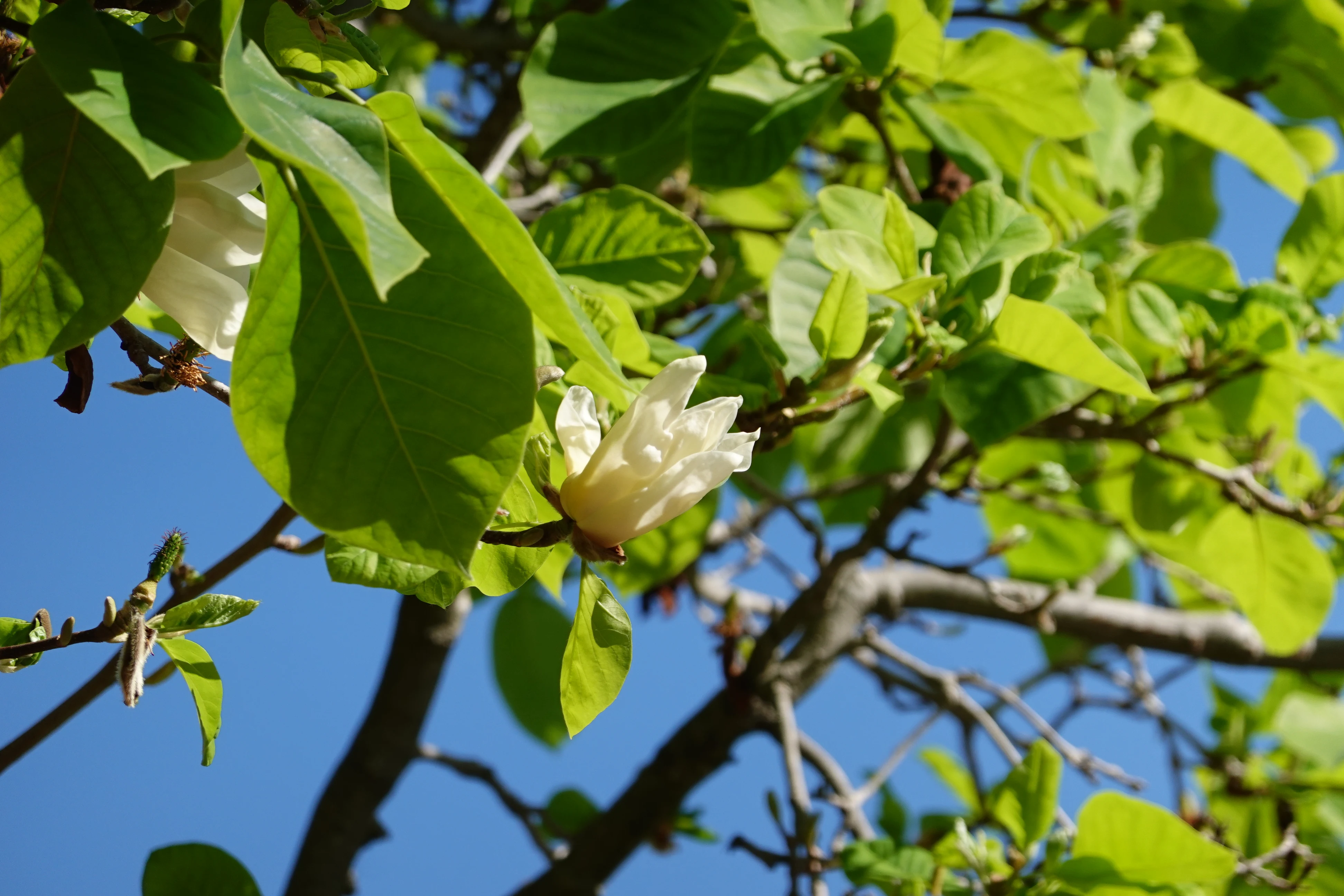Magnolia denudata, the lilytree or Yulan magnolia, is native to central and eastern China. The 10–16 cm white flowers that emerge from early to late spring, while beautiful and thick with a citrus-lemon fragrance, are prone to browning if subjected to frost. It has been cultivated in Chinese Buddhist temple gardens since 600 AD. Its flowers were regarded as a symbol of purity in the Tang dynasty and it was planted in the grounds of the emperor's palace.
玉蘭,別名白玉蘭、望春花、玉蘭花,原產於中國中部和東部。從初春到晚春出現的 10 至 16 公分的白色花朵雖然美麗而濃密,並帶有柑橘檸檬的香味,但如果受到霜凍則容易變成褐色。自公元 600 年以來,它就開始在中國佛教寺廟園林中種植。在唐代,它的花被視為純潔的象徵,被種植在皇帝的宮殿裡。
Here are some varieties and hybrids derived from the Magnolia denudata:
以下是由玉蘭花衍生的一些變種及雜交品種:






Notes for Magnolia ‘Ivory Chalice’ 筆記
- ‘Ivory Chalice’ is a cross between Magnolia denudata and Magnolia acuminata.
- ‘Ivory Chalice’ has gorgeous, upright, chalice-shaped, ivory flowers in late winter or early spring. Fragrant.
- A magnolia hybridized by the late David G. Leach of Madison, Ohio.





Notes for Magnolia ‘Elizabeth’ 筆記
- Magnolia ‘Elizabeth’ is a hybrid Magnolia that is the offspring of a cross between Magnolia denudata (Yulan magnolia) and Magnolia acuminata (cucumbertree).
- It is the result of a breeding program to create yellow-flowered varieties conducted at the Brooklyn Botanic Garden beginning in 1953.
- Masses of large, cup-shaped, primrose yellow flowers appeared in early to mid-spring at the twig tips. Slightly fragrant. The large blooms may last up to 4 weeks. This cream to pale yellow flowered Magnolia ‘Elizabeth’ gained the Royal Horticultural Society’s Award of Garden Merit in 1993.
- It is named for Elizabeth Van Brunt, who donated funds to the Brooklyn Botanic Garden.
Notes for Magnolia denudata/Yulan magnolia 玉蘭花筆記
- Magnolia denudata, the lilytree or Yulan magnolia, is native to central and eastern China.
- It has been cultivated in Chinese Buddhist temple gardens since 600 AD. Its flowers were regarded as a symbol of purity in the Tang dynasty and it was planted in the grounds of the emperor's palace.
- It is the official city flower of Shanghai.
- The 10–16 cm white flowers that emerge from early to late spring, while beautiful and thick with a citrus-lemon fragrance, are prone to browning if subjected to frost. It is a famous early spring flower in China. Because it has no leaves when it blooms, it is called the "wood flower tree".
- Magnolia denudata is used as an ornamental tree in gardens.
- This plant has gained the Royal Horticultural Society's Award of Garden Merit.
- The petals are thick and fragrant. They can be wrapped in flour and fried, or candied, which is sweet and delicious. The seeds can be used to extract oil, the bark can be used as medicine, and the wood can be used to make small utensils or for carving.
- 玉蘭,別名白玉蘭、望春花、玉蘭花,原產於中國中部和東部。
- 自公元 600 年以來,它就開始在中國佛教寺廟園林中種植。在唐代,它的花被視為純潔的象徵,被種植在皇帝的宮殿裡。
- 它是上海市的市花。
- 從初春到晚春出現的 10 至 16 公分的白色花朵雖然美麗而濃密,並帶有柑橘檸檬的香味,但如果受到霜凍則容易變成褐色。是中國著名的早春花木,因為開花時無葉,故有「木花樹」之稱。
- 玉蘭花可用作園林中的觀賞樹。
- 它曾獲得了皇家園藝學會的花園功績獎。
- 花瓣質厚而清香,可裹面油煎食用,又可糖漬,香甜可口。種子可榨油,樹皮可入藥,木材可供制小器具或雕刻用。
References 參考資料
- Wikipedia: Magnolia denudata
- 維基百科: 玉蘭
Plants Posts 植物的帖子
Comments